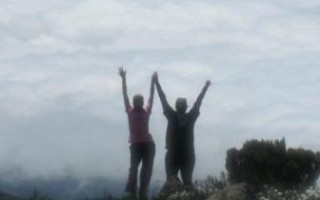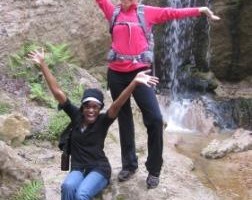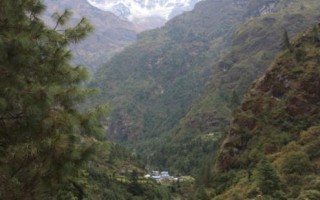
For years I had the desire to travel abroad and volunteer, but it wasn’t until 2010 I took the leap and finally did it. I chose to volunteer through a non-profit organization called Cross-Cultural Solutions (CCS), and I chose Morocco as my first volunteer country.

On June 24th, I will begin a 6 day climb to the summit of Mount Kilimanjaro in Tanzania, Africa. The purpose of my climb is to raise money for the O’Brien School for the Maasai, and a women’s group that operates out of a room in the school. The O’Brien School for the Maasai is […]

Continued from part 1… We start our second day crossing the Dudh Kosi (Milk River) on a steel suspension bridge about 50 metres (165ft) above the river – it’s a thrilling feeling with mountains on each side and the roaring river below. As we cross, the wind pushes us to one side and you feel […]

First I would like to kindly thank Sucheta for letting me write a guest entry on her blog! I recently met Sucheta in Nepal where I was re-visiting VIN (Volunteers Initiative Nepal) whom I worked for last year. This year I set up a partner foundation called Friends of VIN (visit our newly launched website Friends […]
The best thing to do when you or a travel companion are gluten-free is to plan ahead. While you have a free internet connection at home, research gluten-free restaurants, write down their addresses, and keep them in your purse. That way, you can look forward to dining out, instead of sticking to basic foods, like […]
My wife Mary and I made our first trip to India last September on a tour which included Agra, Jaipur and New Delhi, known as the Golden Triangle. While we enjoyed the comfort and convenience of guided tours, we arrived in New Delhi early for two homestays to be able to connect with some of […]
It’s not easy to be a vegetarian while on the road. I know that because my husband used to be a traveling consultant. 100% travel, eating out all the time, fly out on Monday mornings and return on Thursday nights, jet lag, one hotel room after another… it is a tough drill. If your client […]
It all started a couple years ago when I went on Wikipedia to search for international holidays, as I was very interested in learn about more than just the well-known ones like Halloween and Valentine’s Day. As I came across a holiday called World Toilet Day, I researched it and read about an agency called […]